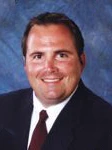
Taking care of turf is tough enough without having to worry about any other green on the course. But knowing how to approach a budget helps superintendents get the most out of what they’ve got. We asked Steve Gano, vice president of operations at International Golf Maintenance in Champions Gate, Fla., to help clear up capital expenditures.
What’s a capital expenditure, exactly, and where would we see them on a course budget?
Capital expenditures are outlays for fixed assets – resources which have a long life. In our business a capital expenditure involves a purchase of a new fixed asset, a replacement of a fixed asset or a major overhaul which extends the useful life of a fixed asset. Fixed assets in a golf course maintenance setting include the land, maintenance equipment, the maintenance building, the irrigation system, and even the golf course features such as greens and bunkers.
Can you briefly explain capital expenditure evaluation?
Oftentimes in golf course maintenance, it is as simple as whether or not the cost to repair the equipment, considering downtime, exceeds the cost of replacement over a period of time. As an example, if a mower needs a new engine or hydraulic pump, the repair costs could exceed the equipment cost to a club over the period of a year. Another example pertains to an irrigation system. If an antiquated and unreliable irrigation system poses a risk for turf loss on greens, then at some point, the potential for lost revenue and replacement of the turf outweighs the cost of a new system.
As an alternate example, we’ve had capital expenditures created as a result of upgrading the experience at a course. A simplistic example is the purchase of a green’s roller due to the demand for quicker ball roll.
Can you give us a quick explanation of some of these terms?
Residual/salvage value: Salvage value is the market value of the fixed asset at the end of its useful life. It could be as simple as the value of the metal or the value of the independent parts of the machinery. Residual value: This refers to the amount that a leasing company believes a fleet is worth at the end of the lease term.
Tax considerations: A capital expenditure is spread over the useful life of the fixed asset, and the expense is deducted from the businesses income – resulting in less income tax.
Payback: This is the term in which a course recoups the investment in a fixed asset – return on the investment.
Can you discuss some of the decision making process when it comes to leasing vs purchasing?
For a golf course, it depends on the useful life of the machinery. Mowing equipment and utility vehicles which are used almost daily are oftentimes leased. Cultural equipment with a longer useful life, such as aerators, topdressers and vertical mowers are purchased more often. And, there are different tax considerations when deciding to lease or purchase.
The leasing company owns the equipment at the end of the lease. A superintendent should consider hour limits and residual values when leasing. And, a superintendent should consider the attractive monthly costs of a lease vs. a purchase.
Is there any other information regarding capital expenditures that would be important to a golf course superintendent?
There is a lot to consider when making a large capital investment. Not only should a superintendent consider the cost, the method to pay for it, but also, the service capability of the vendor and/or contractor.
Latest from Golf Course Industry
- The Cabot Collection announces move into course management
- Carolinas GCSA raises nearly $300,000 for research
- Advanced Turf Solutions’ Scott Lund expands role
- South Carolina’s Tidewater Golf Club completes renovation project
- SePRO to host webinar on plant growth regulators
- Turfco introduces riding applicator
- From the publisher’s pen: The golf guilt trip
- Bob Farren lands Carolinas GCSA highest honor






